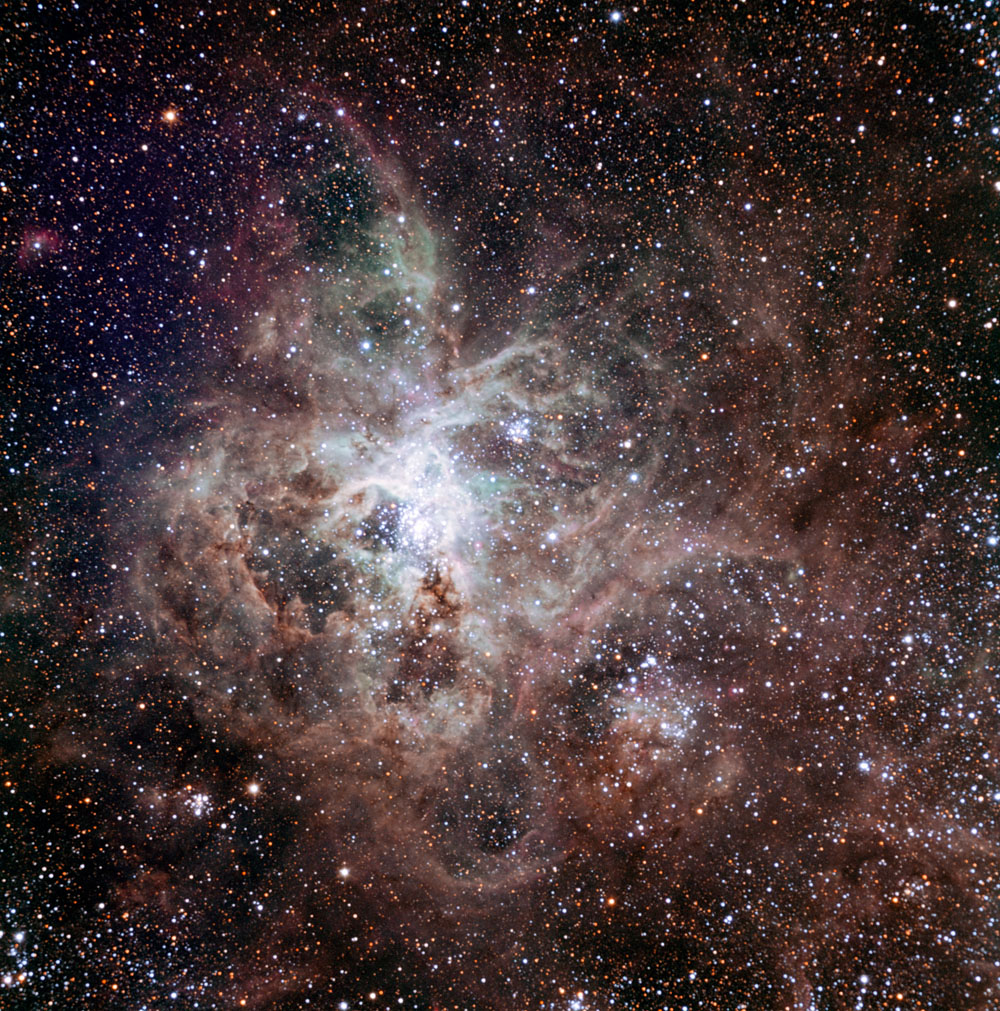New Planet-Hunting Robot Telescope Takes First Photos

A new robotic telescope built to hunt for alien planets and comets from Chile has opened its camera eyes and taken its first photos of the night sky.
The first cosmic photos from the telescope, known asTRAPPIST, included stunning views of the Tarantula Nebula and spiral galaxyM83, but astronomers hope to use the advanced observatory to find two moreelusive targets ? alienplanets and comets that orbit the sun. The new photos werereleased this week.
?Thetwo themes of the TRAPPIST project are important parts of an emerginginterdisciplinary field of research ? astrobiology ? that aims at studying theorigin and distribution of life in the Universe,? said astronomerMicha?l Gillon, who is in charge of the telescope's exoplanet studies for theEuropean Southern Observatory, which is operating the new instrument.
TRAPPIST,short for TRAnsiting Planets and PlanetesImals Small Telescope, is located atESO's La Silla Observatory in Chile's high Atacama desert. It will hunt for extrasolar planets by tracking thetelltale dips in brightness of stars as planets pass in front of them as seenfrom Earth and block their light.
?Terrestrialplanets similar to our Earth are obvious targets for the search for lifeoutside the Solar System, while comets are suspected to have played animportant role in the appearance and development of life on our planet,? said astronomerEmmanu?l Jehin, who leads the telescope's comet-hunting mission.
The TRAPPISTtelescope is also equipped with special filters that are optimized to trackcomets in the southern sky. Researchers plan to use the telescope to makeregular comet observations to track the icywanderers as they orbit the sun, as well as determine what types of materialthey eject during their cosmic travels.
- The Strangest Alien Planets
- Photos: The Great 2007 Comet McNaught
- Telescopes for Beginners
Get the Space.com Newsletter
Breaking space news, the latest updates on rocket launches, skywatching events and more!
Join our Space Forums to keep talking space on the latest missions, night sky and more! And if you have a news tip, correction or comment, let us know at: community@space.com.

Space.com is the premier source of space exploration, innovation and astronomy news, chronicling (and celebrating) humanity's ongoing expansion across the final frontier. Originally founded in 1999, Space.com is, and always has been, the passion of writers and editors who are space fans and also trained journalists. Our current news team consists of Editor-in-Chief Tariq Malik; Editor Hanneke Weitering, Senior Space Writer Mike Wall; Senior Writer Meghan Bartels; Senior Writer Chelsea Gohd, Senior Writer Tereza Pultarova and Staff Writer Alexander Cox, focusing on e-commerce. Senior Producer Steve Spaleta oversees our space videos, with Diana Whitcroft as our Social Media Editor.











